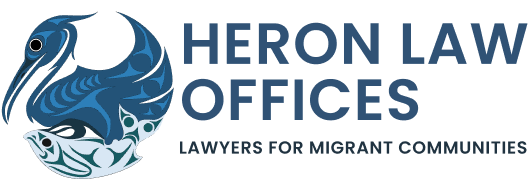








Let’s Get in Touch
Subscribe to Our Newsletter
Stay informed with our latest news and commentary.
Recent Blog Posts
Why the 30-Year Old Florea Presumption Should Be Retired in Face of Automated Decision Making in Canadian Immigration
In the recent Federal Court decision of Hassani v. Canada (Citizenship and Immigration), 2023 FC 734, Justice Gascon writes a paragraph that I thought would be an
Could the Federal Court Have Avoided the Chinook Abuse of Court Process Tetralogy?
What Happened? In the recent decision of [1] Ardestani v. Canada (Citizenship and Immigration) 2023 FC 874, part of a tetrology of cases where Federal Court justices
The Problem with Khaleel: Extrinsic Evidence Versus Applying Local Knowledge
In this post, I am going to do a gentle critique of a Federal Court decision from last year Khaleel v. Canada (MCI) 2022 FC
Guide de politique sur le soutien automatisé à la prise de décision version de 2021/Policy Playbook on Automated Support for Decision-making 2021 edition (Bilingual)
Hi Folks: I wanted to share a copy of IRCC’s Policy Playbook on Automated Support for Decision-making. We learned from ATIP that even though there
Subscribe to Our Newsletter
Stay informed with our latest news and commentary.
Tags
My Value Proposition
My Canadian immigration/refugee legal practice is based on trust, honesty, hard-work, and communication. I don’t work for you. I work with you.
You know your story best, I help frame it and deal with the deeper workings of the system that you may not understand. I hope to educate you as we work together and empower you.
I aim for that moment in every matter, big or small, when a client tells me that I have become like family to them. This is why I do what I do.
I am a social justice advocate and a BIPOC. I stand with brothers and sisters in the LGBTQ2+ and Indigenous communities. I don’t discriminate based on the income-level of my clients – and open my doors to all. I understand the positions of relative privilege I come from and wish to never impose them on you. At the same time, I also come from vulnerability and can relate to your vulnerable experiences.
I am a fierce proponent of diversity and equality. I want to challenge the racist/prejudiced institutions that still underlie our Canadian democracy and still simmer in deep-ceded mistrusts between cultural communities. I want to shatter those barriers for the next generation – our kids.
I come from humble roots, the product of immigrant parents with an immigrant spouse. I know that my birth in this country does not entitle me to anything here. I am a settler on First Nations land. Reconciliation is not something we can stick on our chests but something we need to open our hearts to. It involves acknowledging wrongdoing for the past but an optimistic hope for the future.
I love my job! I get to help people for a living through some of their most difficult and life-altering times. I am grateful for my work and for my every client.
Awards & Recognition

Canadian Bar Association Founders' Award 2020

Best Canadian Law Blog and Commentary 2019

Best New Canadian Law Blog 2015
Best Lawyers Listed 2019-2021

2023 Clawbies Canadian Law Blog Awards Hall of Fame Inductee

Best Canadian Law Blog and Commentary 2021

Canadian Bar Association Founders' Award 2020

Best Canadian Law Blog and Commentary 2019

